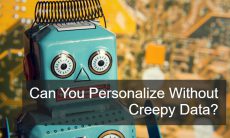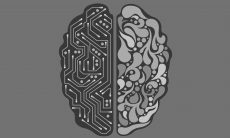Evolution as understood by Charles Darwin was supposed to happen very slowly and gradually. That’s why he, and many other scientists, were puzzled by an event that happened about 540 million years ago, known as the Cambrian Explosion. During that period, life as it was known went in overdrive mode, and a world that was mostly comprised by simple life forms, suddenly – in geological scale – became extremely diversified, with most major animal phyla appearing in a span of 25 million years, to then slow down to its normal pace. There are many theories trying to explain it, like the increase in oxygen levels, or the onset of new genetic mechanisms drastically affecting embryo development. A possible explanation was made popular in 2003 by then Oxford professor Andrew Parker, who published the book “In the blink of an eye: how vision sparked the big bang of evolution”. From Publishers Weekly:
The Cambrian explosion was triggered by the sudden evolution of vision in simple organisms. In Parker’s “Light Switch” theory, active predation became possible with the advent of vision, and prey species found themselves under extreme pressure to adapt in ways that would make them less likely to be spotted. New habitats opened as organisms were able to see their environment for the first time, and an enormous amount of specialization occurred as species differentiated.
Parker’s theory – as many of the other ones presented to date to explain that sudden explosion of life diversity – has many critics, and it’s far from being an accepted fact. But it has a fair degree of logic: the development of vision would be a great candidate to be what in MBA-lingo is known as “a game changer,” an event that provokes a significant shift in the current manner of doing things.
Over the last several years, technology pundits have been gravitating around the big data + mobile + cloud + social as the big game changers of our time. However, the more we focus on those four elements, the more they resemble the alchemy of ancient Greece, anchored on the belief that all things in the universe were formed from water, earth, fire and air. In reality, there are many other technology elements paving our way to the future, such as the Internet of Things, blockchain, quantum computing, and augmented reality.
Having said all that, the technology area that seems to have the most chance to trigger a digital Cambrian Explosion is Artificial Intelligence, and Machine Learning in particular. I’m old enough to have witnessed all the hype around AI in the late 1980’s, to then see it almost die in the 1990’s, and finally watch it gaining unprecedented attention over the last 5 years or so. As we start making major inroads in creating machines that are capable of learning beyond what they were originally programmed for, and having them also teaching other machines, a completely new world of opportunities and threats starts taking shape.
Andrew Ng – Chief Scientist at Baidu, and founder of Google Brain and Coursera, among other things – boldly stated in his keynote at the Spark Summit that “AI is the new electricity”, comparing it to the transformation that happened when electricity became widely available in the late 1800’s. However, there’s a fundamental difference there: the electricity that was made available then is pretty much the same available to us today. The rapid pace of R&D happening today in artificial intelligence and machine learning suggests that over the next few decades machines will be able to do things that were in science fiction territory not that long ago. Similar to Andrew Parker’s vision theory, it would not be a one-off event, but a series of rapid transformations that can keep feeding the fire and fueling an unprecedented new era of digital transformation. This will have a profound impact in all industries, and in the social contract we grew accustomed to. As menial and laborious tasks move from humans to machines, we may see each of us having less work to do – and that may be a good thing. There was a time during the industrial revolution when children as young as 9 would work 12 hours a day – a burden that would be unthinkable today. Of course, another possible outcome from this would be mass unemployment and an unjust wealth distribution, so it’s key for our modern society that we thread carefully through the maze of this new brave world knocking at our doors.






